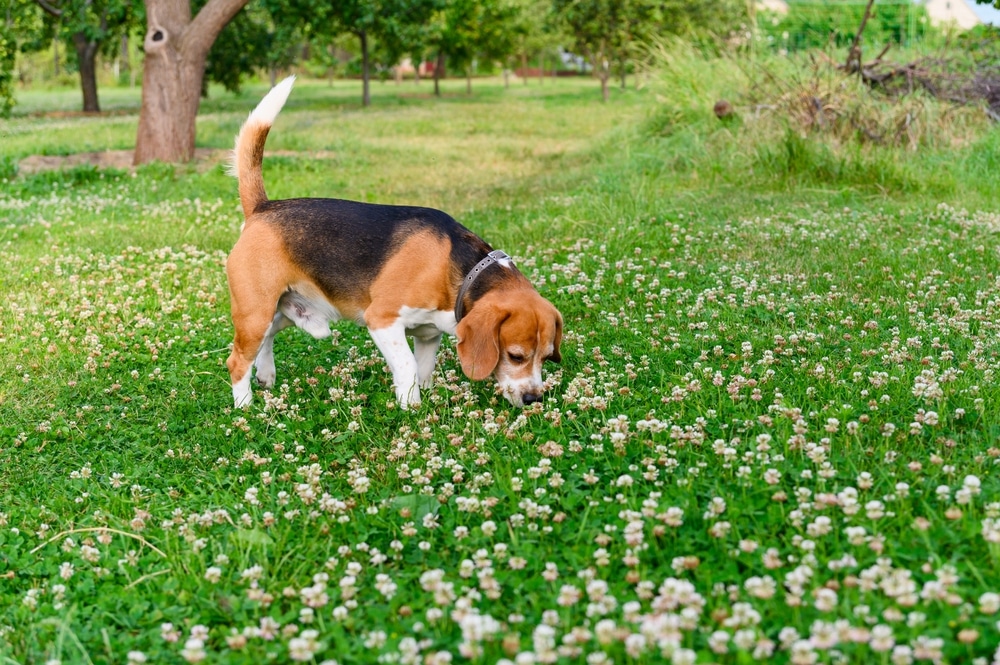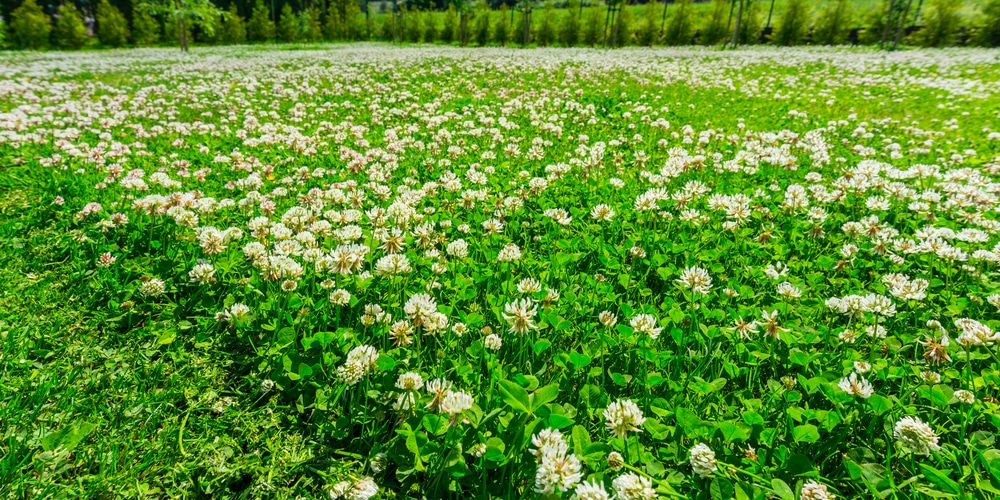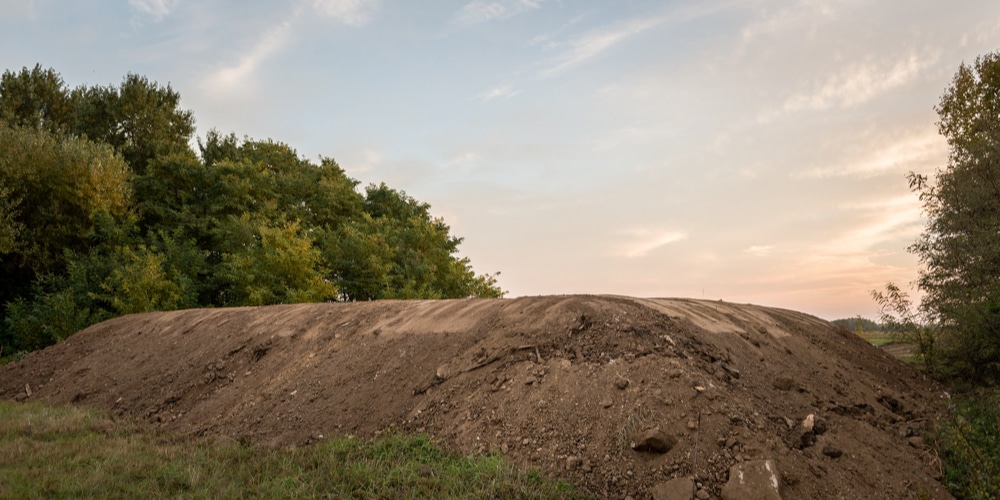Fall Clover Planting: 101
Planting clover in the fall is optimal due to the cooler temperatures and increased moisture, which help clover seeds germinate and establish roots.
Knowing the best clover varieties, soil conditions, and planting locations will ensure a lush, thriving clover lawn.
Best Clover Varieties for Fall Planting
For fall planting, white clover and microclover are excellent choices.
White clover is hardy and adapts well to various climates, providing consistent ground cover.
It’s known for its resilience and ability to thrive in different soil types.
Microclover is a smaller version of white clover, offering similar benefits but with a finer texture.
This variety is particularly appealing for those wanting a more uniform look in their lawn.
Choose clover varieties that suit your climate zone. Check the planting zones to ensure the clover will thrive in your specific region.
Selecting the right type of clover is key to establishing a strong base.
Ideal Soil Conditions for Thriving Clover
Clover prefers well-draining soil with a pH of 6.0 to 7.0.
Testing your soil before planting can help you make necessary adjustments. You can use lime to raise the pH level if needed.
Ensure your soil is rich in organic matter.
Adding compost or well-rotted manure can enrich the soil and provide essential nutrients.
Clover is a nitrogen-fixing plant, so it will benefit from having some initial nutrients to kickstart growth.
Maintain a moderately moist soil condition, especially during the establishment phase.
Regular watering helps the seeds germinate and develop strong root systems. Avoid soggy conditions, as they can lead to root rot.
Selecting the Perfect Planting Location
Choose an area with full sun to partial shade.
While clover can tolerate some shade, it performs best with at least four to six hours of direct sunlight daily.
Ensure the location is free of heavy foot traffic.
Heavy trampling can inhibit clover growth and spread.
If you want clover in high-traffic areas, consider paths or stepping stones to minimize damage.
Clover is versatile and can grow in many places unsuitable for traditional grass lawns.
It’s ideal for slopes, poor soil areas, and places where grass struggles to grow.
Such characteristics make clover a great low-maintenance and eco-friendly ground cover option.
Preparing the Planting Site
Getting your site ready for planting clover involves a few essential steps to ensure your clover thrives.
Key focus areas include testing and amending the soil, as well as clearing and tilling the ground.
Soil Testing and Amendments
Start by conducting a soil test. This will identify the pH level and the nutrient balance.
Clover thrives in soil with a pH between 6.0 and 7.0. If your pH is outside this range, lime or sulfur may be needed to adjust it.
- pH Adjustment: Use lime to raise pH levels or sulfur to lower them.
- Nutrient Balance: Additions of phosphorus and potassium can help, based on test results.
- Organic Amendments: Consider adding compost or well-rotted manure to improve soil texture and fertility.
Regular soil testing ensures that you only add what your soil needs, preventing nutrient imbalances.
Clearing the Ground and Tilling
Begin by removing any existing vegetation. This can be done by either manual removal or with a suitable herbicide.
Make sure every weed and plant is cleared to avoid competition with your new clover.
- Manual Removal: Pull weeds and any other plants by hand.
- Herbicide Use: Apply a non-selective herbicide and wait for it to take effect.
Once cleared, till the soil to a depth of about 6 inches.
Tilling will break up compacted soil and allow for better root penetration.
- Equipment: Use a rototiller or a garden fork for smaller areas.
- Tilling Depth: Aim for 6-8 inches to ensure proper aeration and root growth.
Be sure your soil is soft and crumbly, which will make it easier for clover seeds to establish themselves.
Planting Techniques
Planting clover in the fall involves specific steps to ensure a lush, thriving ground cover.
To achieve optimal growth, focus on correctly sowing the seeds and properly managing water for new clover plants.
Sowing Seeds for Optimal Spread
To get a uniform and dense clover lawn, start by preparing your soil.
Clear the area of weeds, rocks, and debris. Use a rake to create a smooth, even surface.
Testing your soil’s pH can be beneficial; clover thrives in slightly acidic to neutral soil (pH 6.0-7.0).
Broadcasting the seeds evenly is key.
Use a seed spreader for large areas or simply toss the seeds by hand for smaller patches.
Aim for a seeding rate of about 2 ounces per 1,000 square feet.
Lightly rake the soil after sowing to help the seeds make good contact.
Pressing the seeds down using a garden roller or by walking over them can improve soil-seed contact. Avoid burying the seeds too deep.
Watering Strategies for New Clover
Proper watering is crucial for clover seed germination and establishment.
After sowing, water the area lightly but thoroughly.
Moisture is key to germination, so aim to keep the soil consistently damp.
Use a gentle spray setting on your hose to avoid washing away the seeds.
In the initial two weeks, water the planting area once or twice daily, depending on weather conditions.
Ensure the top inch of soil remains moist.
Gradually reduce the frequency of watering as the seedlings establish.
Overwatering can be as harmful as under-watering.
Pay attention to signs of waterlogging, such as soggy soil or standing water, and adjust your watering schedule accordingly.
With the right balance, your clover will establish a strong, healthy root system.
Post-Planting Care
Proper post-planting care ensures that your clover thrives.
Key activities include fertilization to support growth, effective weed management, and protection against pests and diseases.
Fertilization for Robust Growth
Though clover fixes its own nitrogen, applying a balanced fertilizer can still be beneficial.
Choose a slow-release option with low nitrogen content to avoid overwhelming your clover.
Regularly applying compost or well-rotted manure offers additional nutrients.
Be sure to:
- Water after fertilizing to help nutrients penetrate the soil.
- Avoid high-nitrogen fertilizers, which can promote weed growth.
- Test your soil to determine specific nutrient needs.
By providing the right nutrients, you ensure your clover establishes strong roots and maintains vibrant, healthy growth throughout the season.
Weed Management and Control
Weeds can compete with clover for resources. Regular monitoring and swift intervention keep weeds in check.
- Mow regularly to prevent weeds from seeding.
- Hand-pull weeds that emerge, ensuring you remove the roots.
- Apply a pre-emergent herbicide designed safe for clover.
Mulching with organic materials like straw can also suppress weed growth.
Keeping your clover dense and healthy is the best defense against invasive weeds.
Dealing with Pests and Diseases
Clover is generally hardy, but it can still fall victim to pests and diseases.
Common issues include aphids and fungal infections.
To protect your clover:
- Inspect regularly for signs of pests like aphids.
- Use insecticidal soap or neem oil for pest control.
- Ensure good air circulation to prevent fungal diseases.
If you notice issues, act quickly to mitigate damage.
Maintaining proper hydration and avoiding overhead watering can also reduce disease risks, keeping your clover looking its best.
Seasonal Considerations
Planting clover in the fall can be incredibly rewarding, but it requires some special care.
Key tasks include preparing your clover patch for winter and managing early spring growth to ensure a lush, thriving lawn.
Winterizing Your Clover Patch
To prepare your clover patch for winter, start by checking the soil moisture.
Clover prefers well-drained soil, so make sure there’s no water pooling that could freeze and damage the roots.
- Mow the clover: Cut it to about 3 inches tall.
- Apply mulch: Use a thin layer of organic mulch to protect the roots from frost.
- Inspect for pests: Check for and remove any pests that could harm your plants.
- Fertilize lightly: A light application of phosphorus can help strengthen the roots before the cold sets in.
By following these steps, you can help your clover withstand the winter’s chill and emerge healthy in spring.
Early Spring Maintenance Tips
As temperatures rise and your clover begins to wake up, early spring maintenance will set the stage for robust growth.
- Rake lightly: Remove any debris or dead clover from the winter.
- Inspect soil: Make sure the soil isn’t compacted. Aerate if necessary to allow roots to breathe.
- Water appropriately: Water the clover to keep the soil moist but not waterlogged. Aim for 1 inch of water per week.
- Fertilize with nitrogen: Apply a nitrogen-rich fertilizer to kickstart growth.
- Monitor for pests: Check for early signs of insect damage so you can handle issues before they escalate.
These tasks ensure your clover gets off to a strong start, leading to a lush and vibrant lawn throughout the season.
Harvesting and Utilization
For optimal use of clover, it’s important to know the best techniques for cutting and storing, as well as the benefits of using clover as a cover crop and green manure.
Cutting and Storing Clover
When harvesting clover, timing is crucial. Cut clover when it reaches peak bloom in early summer. This is when it has the highest nutrient content and maximum flavor for livestock, making it ideal for hay or silage.
Use a sharp mower for clean cuts, ensuring the plant regenerates efficiently.
Once cut, it’s essential to dry the clover thoroughly to prevent mold. Spread it out in a well-ventilated area or use drying racks to ensure even drying.
Storing tips:
- Store dried clover in a cool, dry place.
- Use breathable bags or containers to prevent moisture buildup.
- Regularly check for signs of mold or pests.
Clover as a Cover Crop and Green Manure
Clover serves as an excellent cover crop, protecting soil from erosion and suppressing weeds. Plant it in fall and let it grow throughout winter.
In spring, till the clover into the soil to boost organic matter and improve soil structure.
Clover is also a nitrogen-fixer. It converts atmospheric nitrogen into a form that plants can use, reducing the need for synthetic fertilizers.
To maximize nitrogen fixation, allow clover to grow for a few months before tilling it into the ground.
Utilization tips:
- Choose appropriate clover variety for your climate.
- Use a broadcast spreader for even seed distribution.
- Water seeds thoroughly after planting to kickstart germination.
Frequently Asked Questions
Planting clover in your yard can transform it into a lush green haven. Whether you’re looking to attract wildlife or just want a maintenance-free ground cover, this section answers common queries you might have.
What’s the scoop on getting clover to take root in my backyard jungle?
To get clover thriving in your yard, start by ensuring proper soil conditions.
- pH should be slightly acidic to neutral (6.0-7.0).
- Spread seeds evenly using a broadcast spreader.
- Water the area immediately and keep the soil moist until clover is established.
Patience and regular watering are key.
When’s the prime time to plant clover if I’m aiming to wow the local deer population?
Plant clover during early spring or late summer to early fall.
These times provide optimal growing conditions.
For fall planting, ensure that you plant six weeks before the first expected frost to give the clover time to establish.
Got pots? Can I grow a mini clover haven in them?
Yes, you can grow clover in pots.
Choose a pot with good drainage and fill it with slightly acidic to neutral soil.
Water regularly to keep the soil moist and place the pot in a sunny location to help the clover thrive.
Ready to give my lawn a clover makeover—what are the steps?
- Mow your existing grass short.
- Aerate the soil using a garden fork or aerator.
- Spread clover seeds evenly with a broadcast spreader.
- Water thoroughly and keep soil moist until the clover is established.
What kind of prep work is key before inviting clover over to my garden party?
Before planting clover, test your soil’s pH and adjust as needed.
Add organic matter like compost to enrich the soil.
Ensure the soil is well-draining, and consider tilling the area to promote better seed-to-soil contact.
Is there a clover-planting deadline in the fall before Jack Frost gatecrashes?
Yes, you should plant clover at least six weeks before the first expected frost.
This allows the clover to establish its roots before the cold weather sets in.
Don’t wait too long, or the frost may damage the young plants, preventing successful growth.
Last update on 2025-06-06 / Affiliate links / Images from Amazon Product Advertising API








